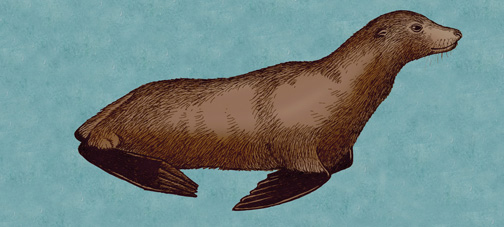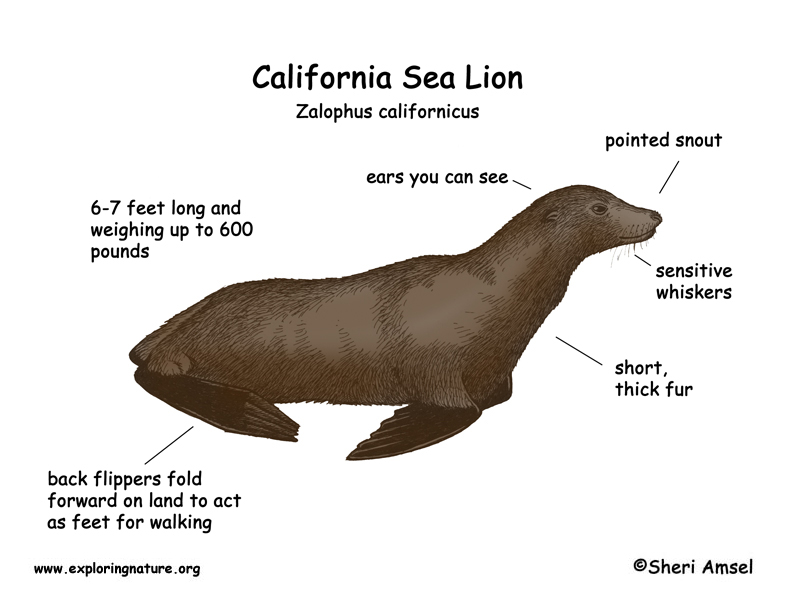

They are found in the coastal water and beaches of British Columbia, Canada down to Mexico.
They live in the ocean and on sandy and rocky beaches on the mainland and islands.
They are about 6 - 7 feet long and weigh up to 600 pounds. Males are larger than the females. They are called “eared” seals because they have ears you can see (unlike seals, who don't).
They gather into colonies on land and rafts (groups) in the ocean. They are very playful and can swim up to 25mph.
They eat fish, squid and octopus.
Predators that eat them are sharks and killer whales. They also are killed by accident in fishing nets.
Males are territorial and collect a group of females called a “harem.” Females are pregnant (gestation) for 11 months and have 1 pup.
They can live 15 - 20 years in the wild. They are listed as Lower Risk - least concern.
Kingdom: Animalia
Phylum: Chordata
Subphylum: Vertebrata
Class: Mammalia
Order: Carnivora
Suborder: Caniformia
Family: Otariidae
Genus: Zalophus
Species: Zalophus californianus
When you research information you must cite the reference. Citing for websites is different from citing from books, magazines and periodicals. The style of citing shown here is from the MLA Style Citations (Modern Language Association).
When citing a WEBSITE the general format is as follows.
Author Last Name, First Name(s). "Title: Subtitle of Part of Web Page, if appropriate." Title: Subtitle: Section of Page if appropriate. Sponsoring/Publishing Agency, If Given. Additional significant descriptive information. Date of Electronic Publication or other Date, such as Last Updated. Day Month Year of access < URL >.
Amsel, Sheri. "Sea Lion (California)" Exploring Nature Educational Resource ©2005-2024. December 13, 2024
< http://www.exploringnature.org/db/view/Sea-Lion-California >


